For developers

Home > User guide > For developers
Introduction
Transition from "For Developers" in the global menu.
With the developer functions, you can make settings for calling BOTs created in the cloud BOT as APIs, execution tests, and advanced settings related to cooperation with external services.
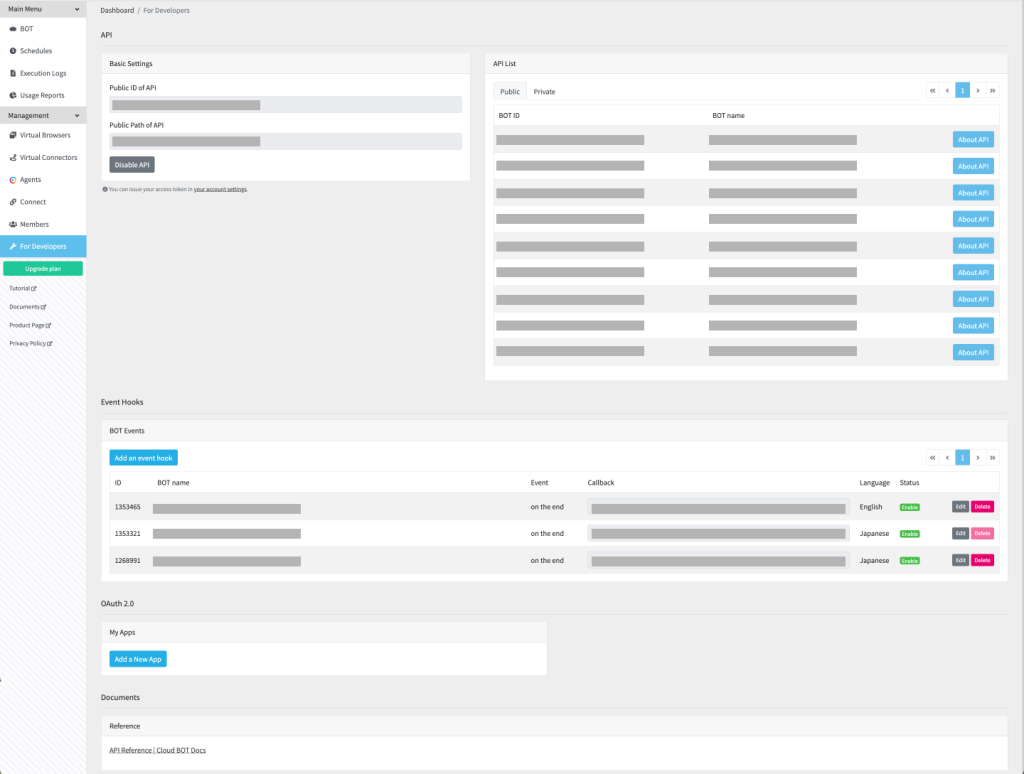
API
The created BOT can be published as an API.
Basic settings

Sets a public path (ID) and enable the API. The public ID you set will be used as part of the endpoint when calling the BOT.

When the API is published, "Disable API" is displayed to disable the API.
API List
You need to enable the API in advance. In addition, public settings must be set for each BOT. The public ID you set will be used as part of the endpoint when calling the BOT.
By switching tabs, currently published BOTs and unpublished BOTs are displayed alternatively.
Publishing your BOT as API
BOT is set to "Private" by default.
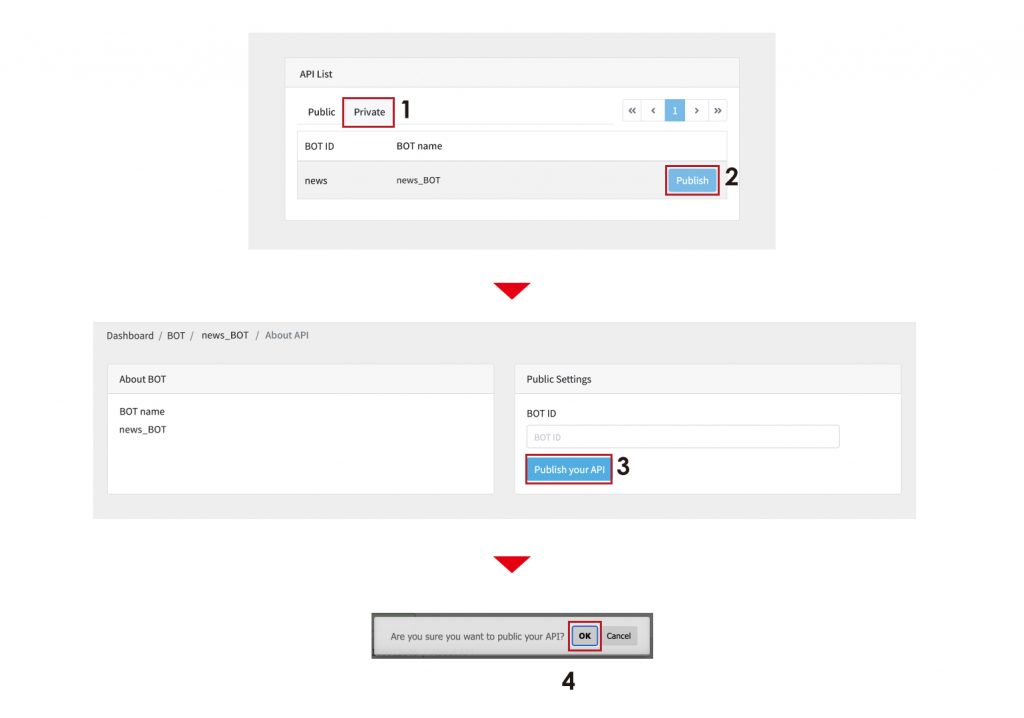
- Select the [Private] tab.
- Press the [Publish] button of the BOT whose API you want to publish.
- Click the [Publish your API] button.
- Click [OK] in the modal window.
About API
You can view the information such as about BOT, Public settings, Endpoint.
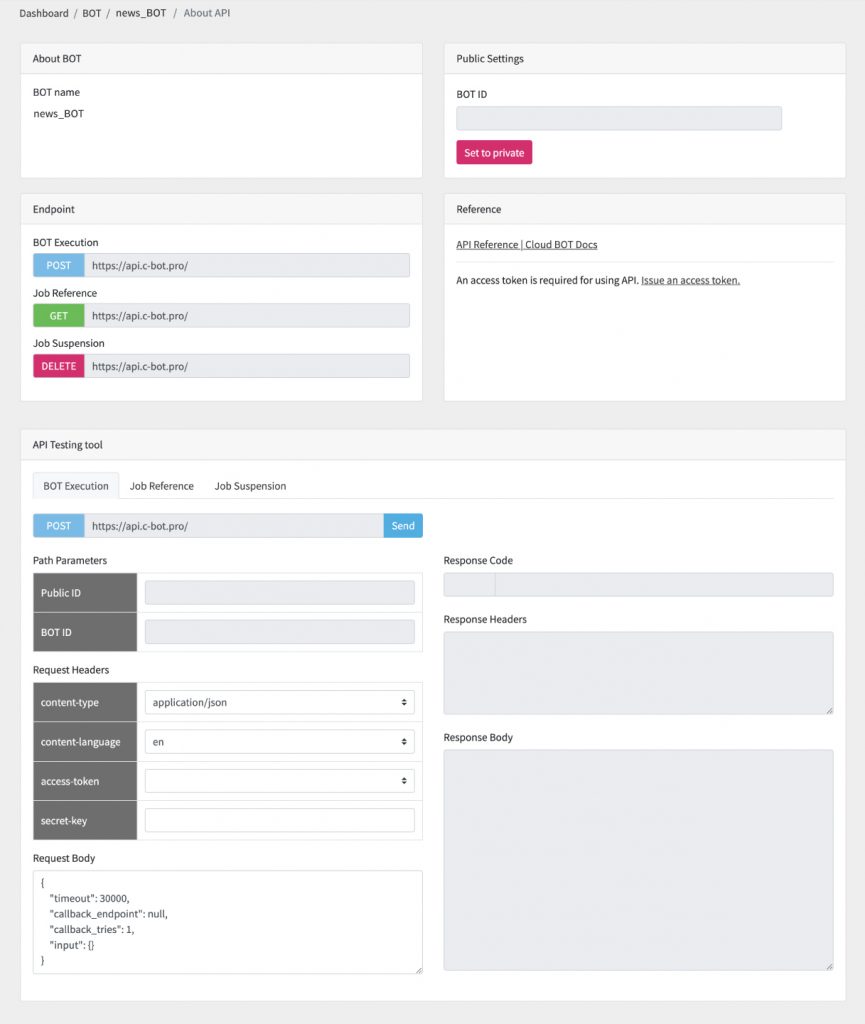
Enable/Disable API
You can enable/disable it with the button in the "Public Settings". It is same as the button in the "Basic settings".
Testing API Using API Test Tool
You can actually run the BOT API using the test tool.
Scroll down the About API screen to test three types: BOT Execution (POST), Job Reference (GET), and Job Suspension (DELETE).
Here, we explain the steps with using "BOT Execution" as an example.
The Request Body shows the parameter sample used when executing the BOT API. The sample is created with the initial values in the BOT.
It is possible to rewrite the Request Body and test the execution.
- Select the access token to be used and enter the secret key.
- Click [Send] to execute the API.
- When the API execution is completed, the response contents will be displayed in "Response Body".
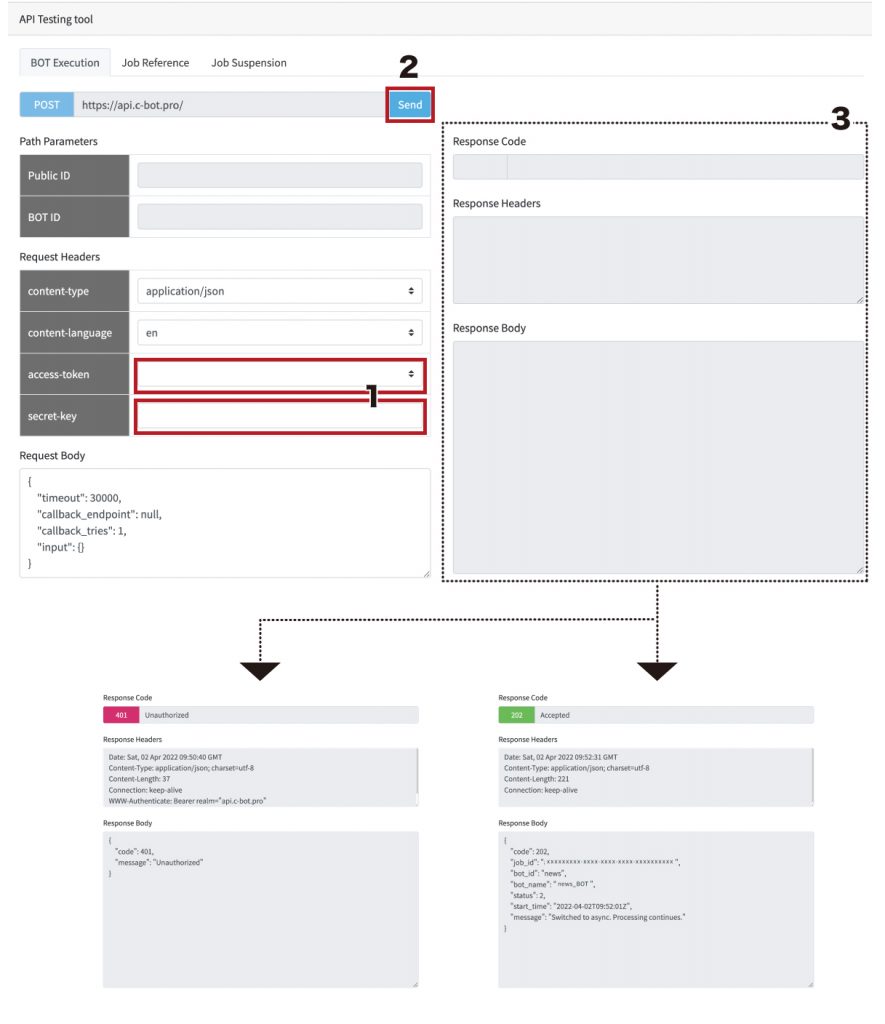
Event Hook
A setting to notify the specified callback when a specific event occurs.
BOT Event
A list of event hooks set in BOT will be displayed.
- You can register, edit and delete it.

Register or edit an event hook
You can register event hooks to any BOT. The same operation will be performed when you press "Edit" from the list.
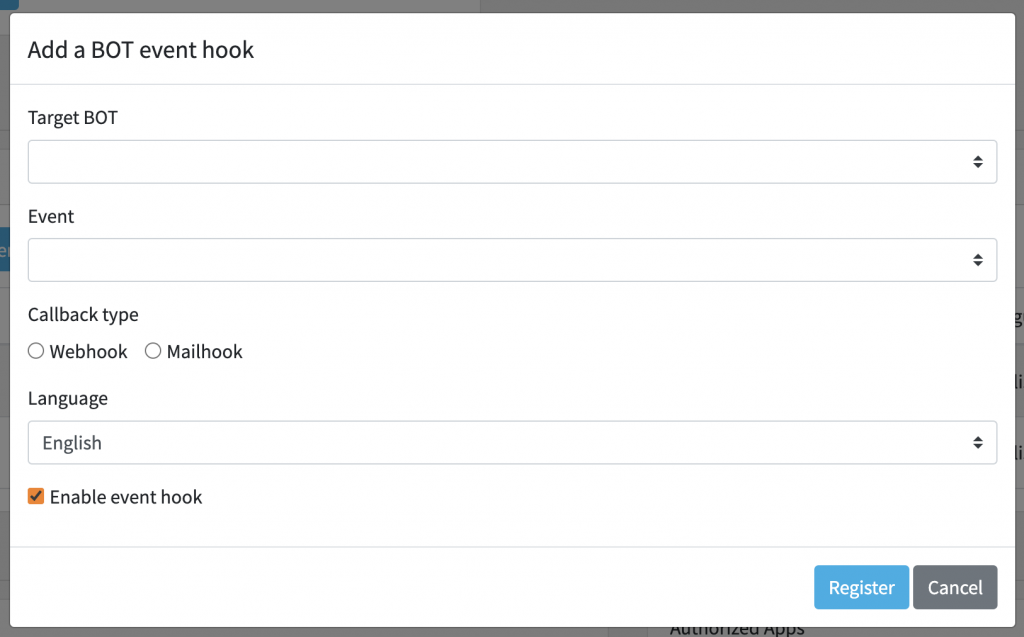
Target BOT
- Select the BOT that will be the condition for triggering the event.
Event
- Specifies the condition for triggering the event.
Callback Type
Language
- Select the language.
Enable/disable event hook
- Enable the event hook by checking the checkbox. Uncheck to disable.
- You can check the status is enabled or disabled in the list of event hooks.
About the callback type
Webhook
When an event occurs, the BOT execution result will be posted to the endpoint.

- Enter your endpoint.
*The endpoint must always start with https://.
*Please refer to 「Cloud BOT RESTful API Callback Endpoint Implementation Requirements」 for endpoint implementation requirements.
※Please refer here for the request source IP address of the webhook.
Mailhook
When an event occurs, the BOT execution result will be sent to the specified email address.

- Select the email address to send. (Multiple selection possible)
* You can select email addresses for members and guests in Member Management. Please refer to the member management page.
OAuth 2.0
By using OAuth authentication, users will be able to authorize access to external applications with their own account privileges without being aware of specialized settings such as access tokens and secret keys.

My Apps
Displays the registered apps. You can set the setting which allows external applications to be authorized via OAuth authentication.
- You can register, edit or discard apps.
- Click the [Add a New App] button to display a modal window. Enter the app name and the callback URL.
- Be sure to set your company name or personal name before adding My Apps.
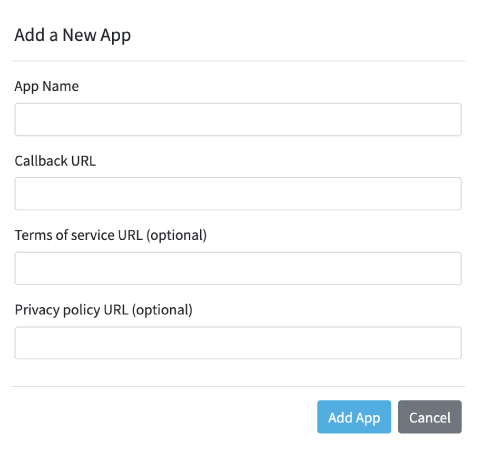
 Cloud BOT Docs
Cloud BOT Docs